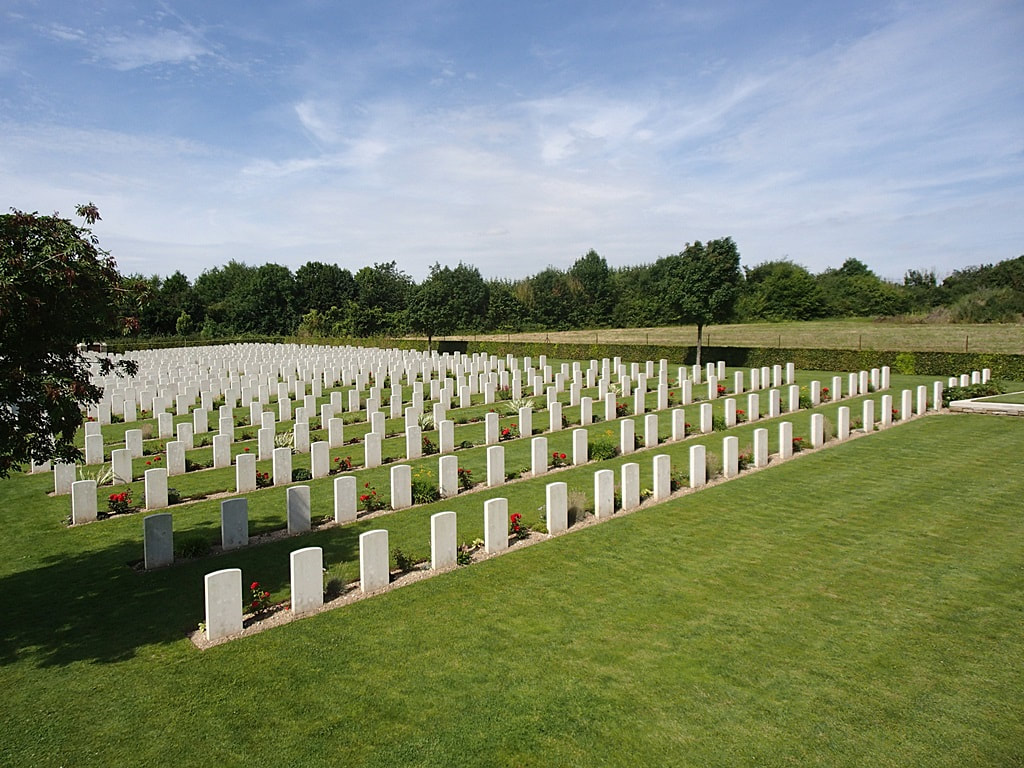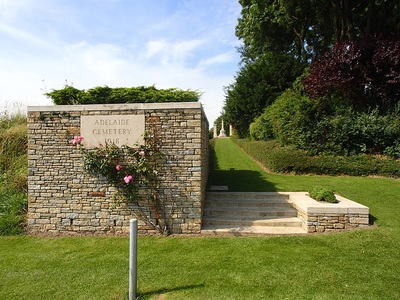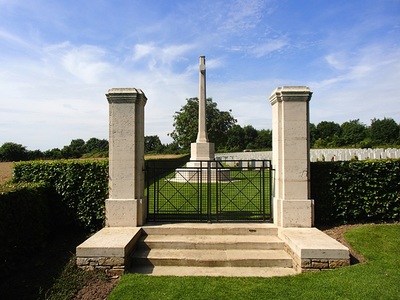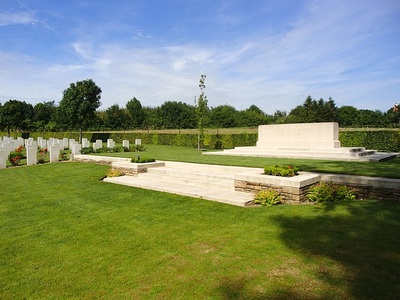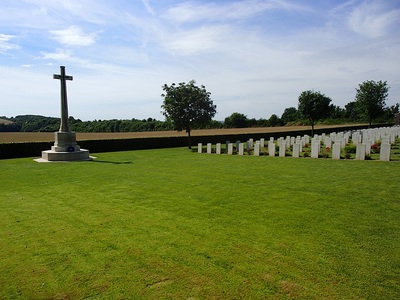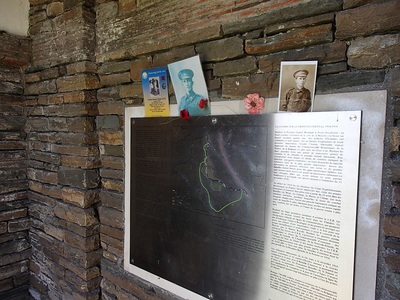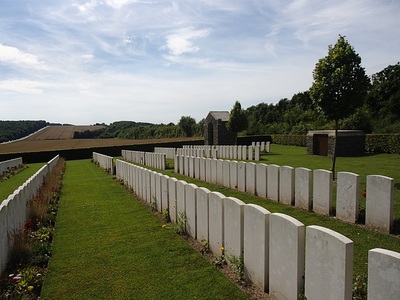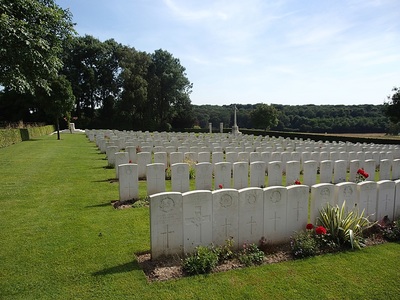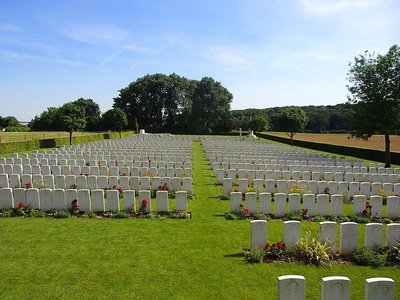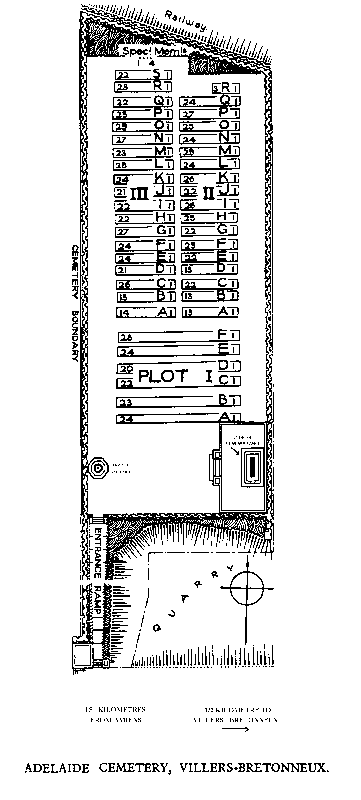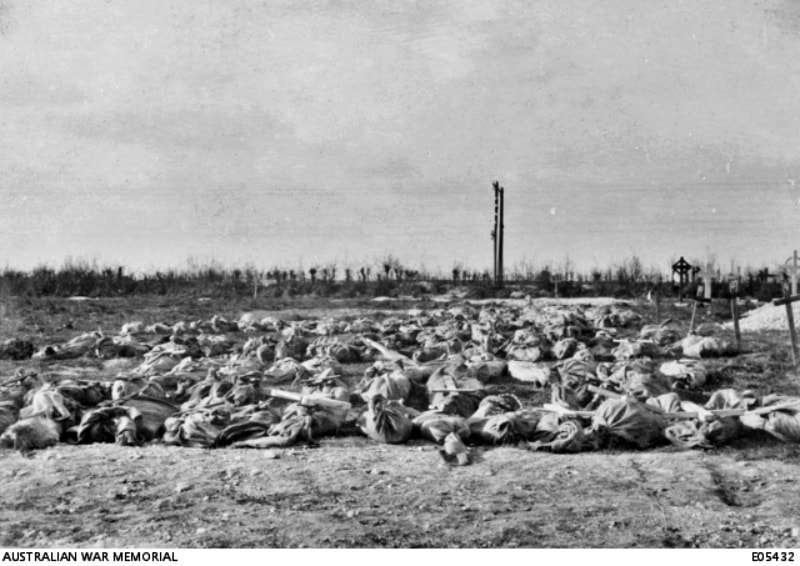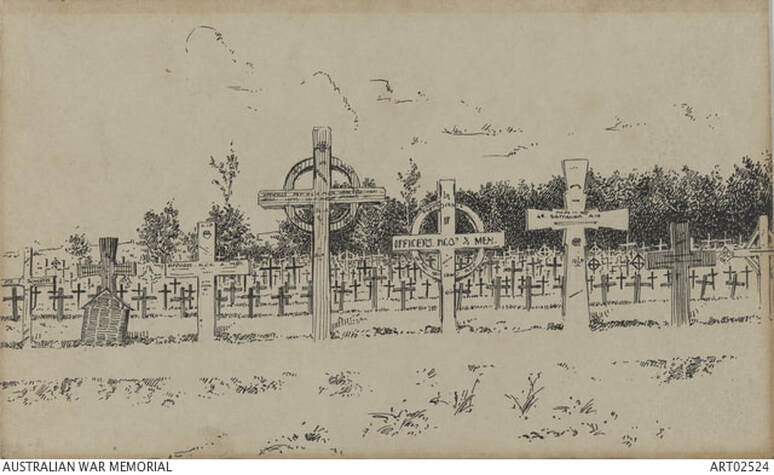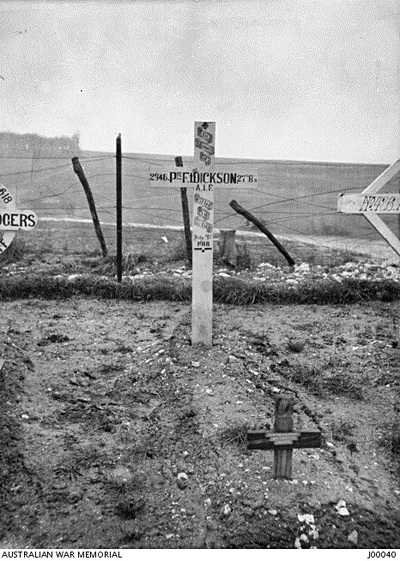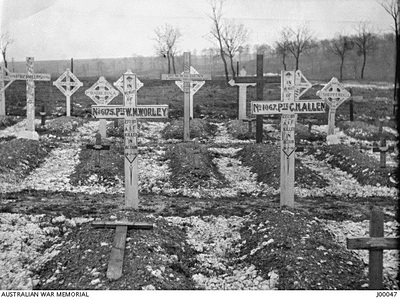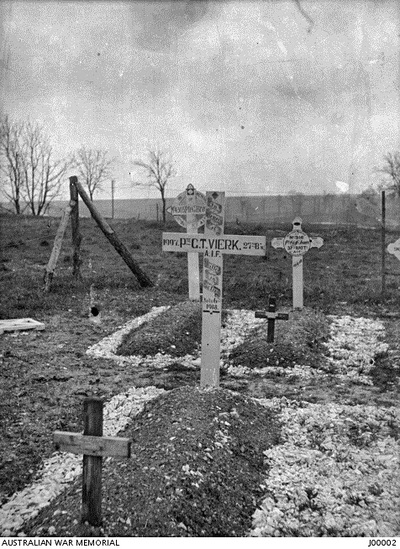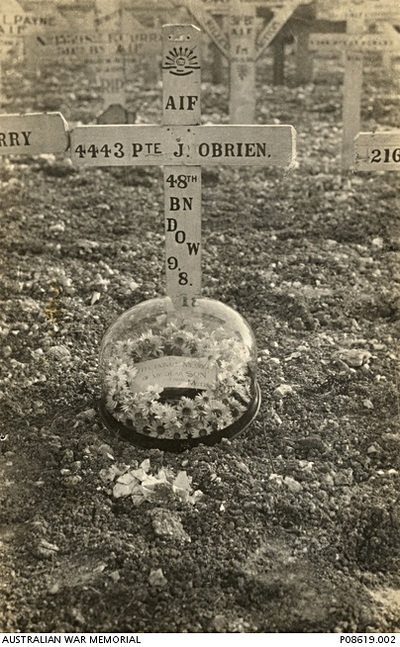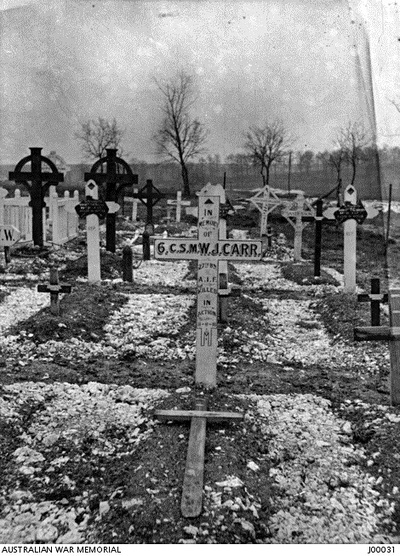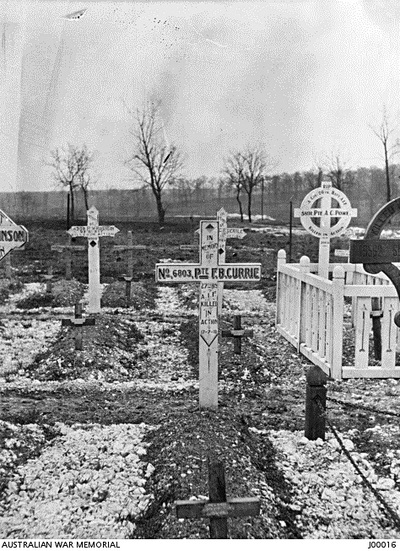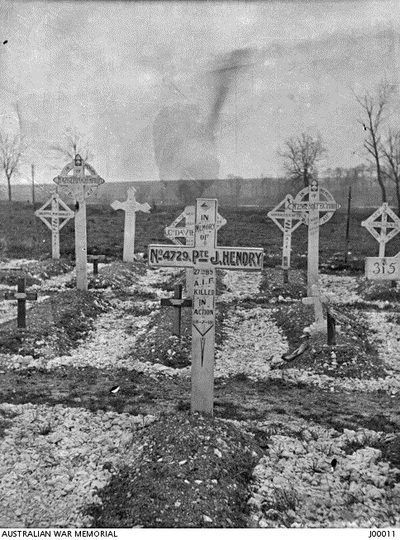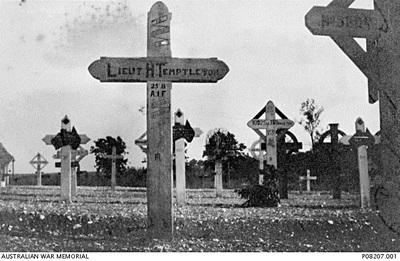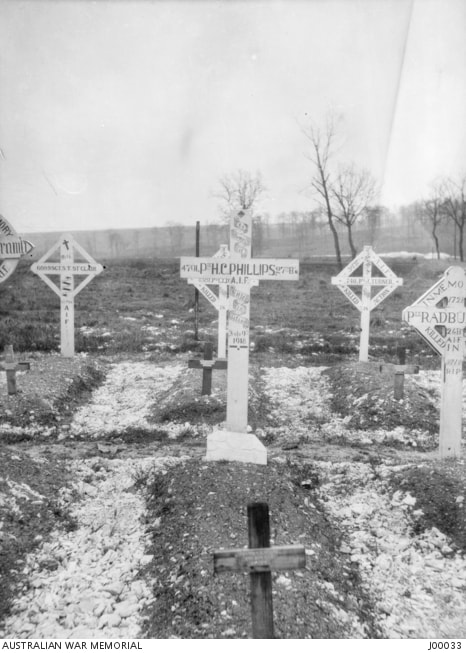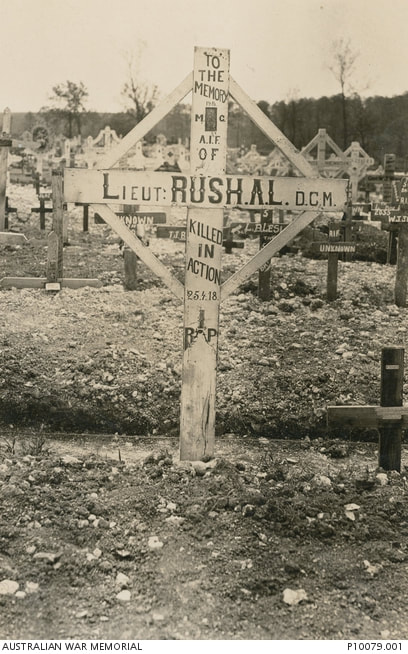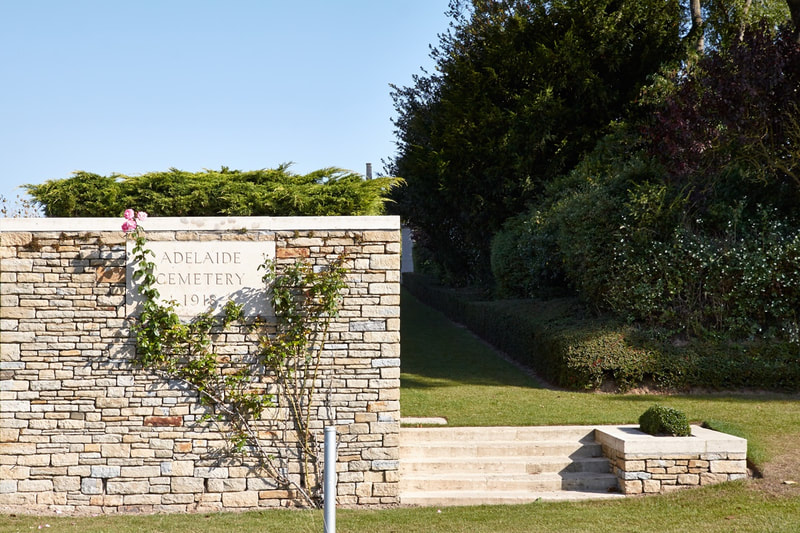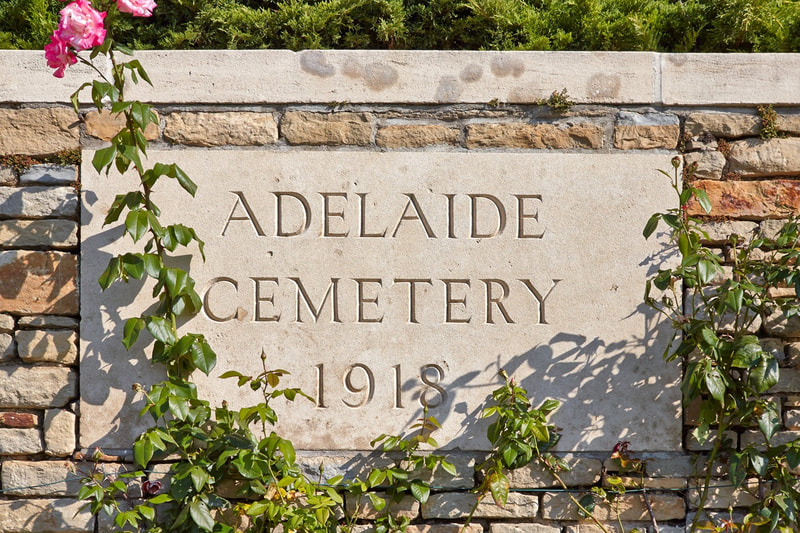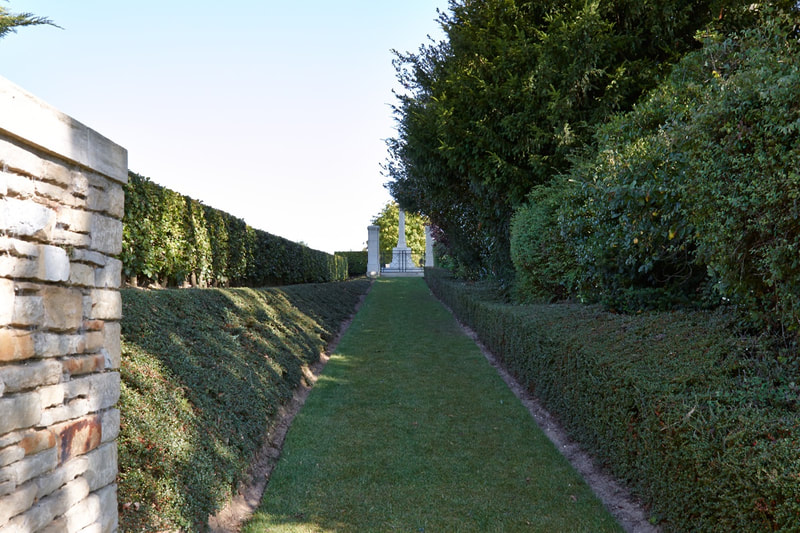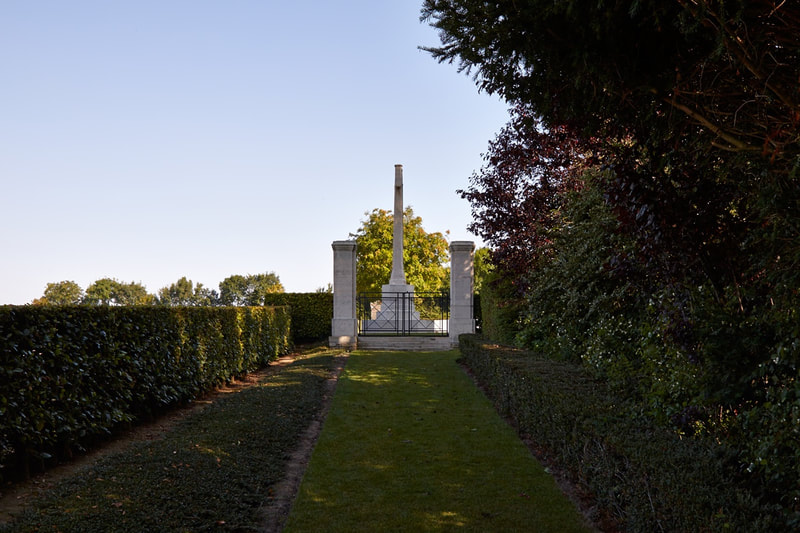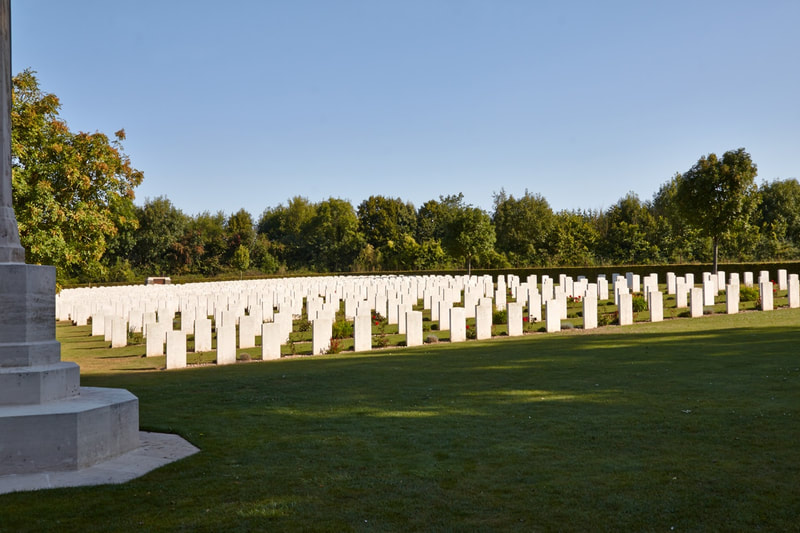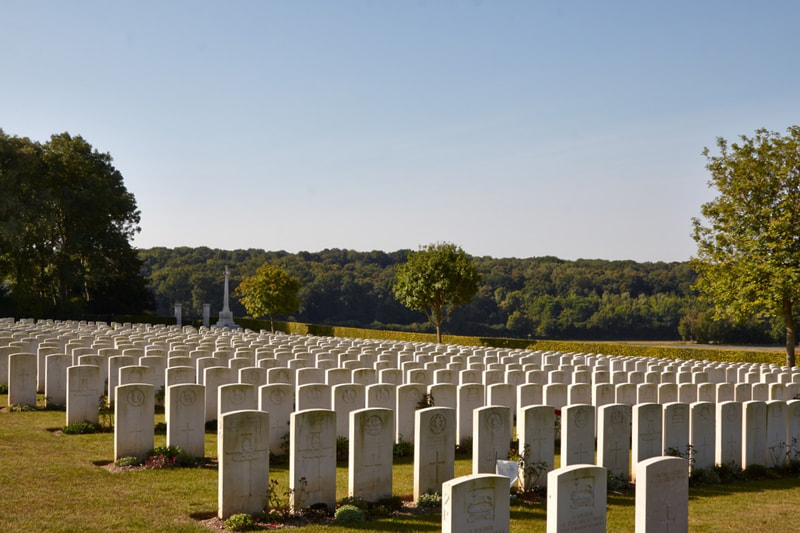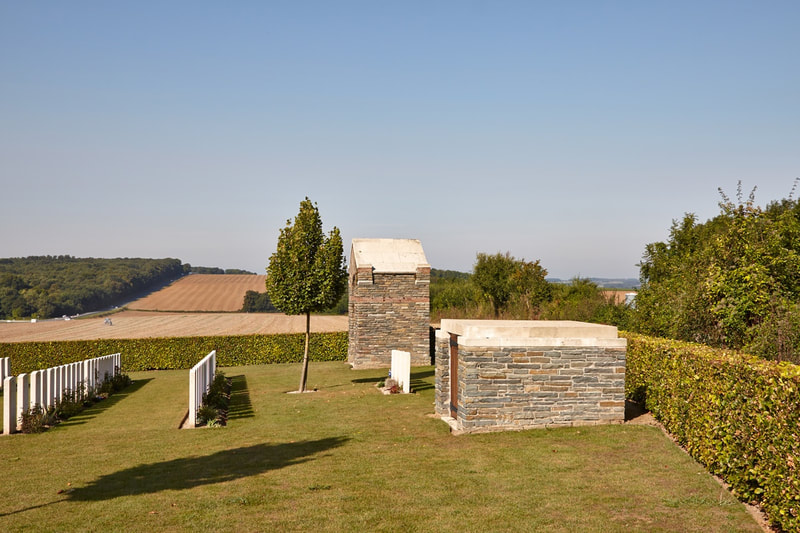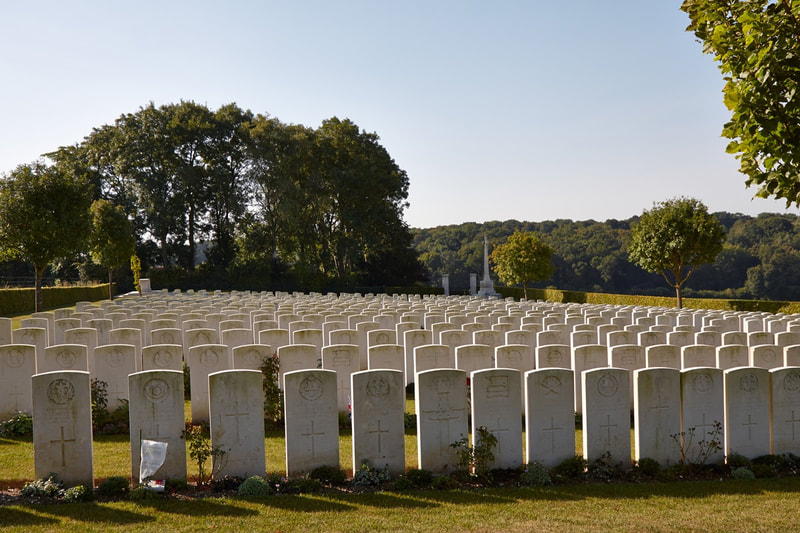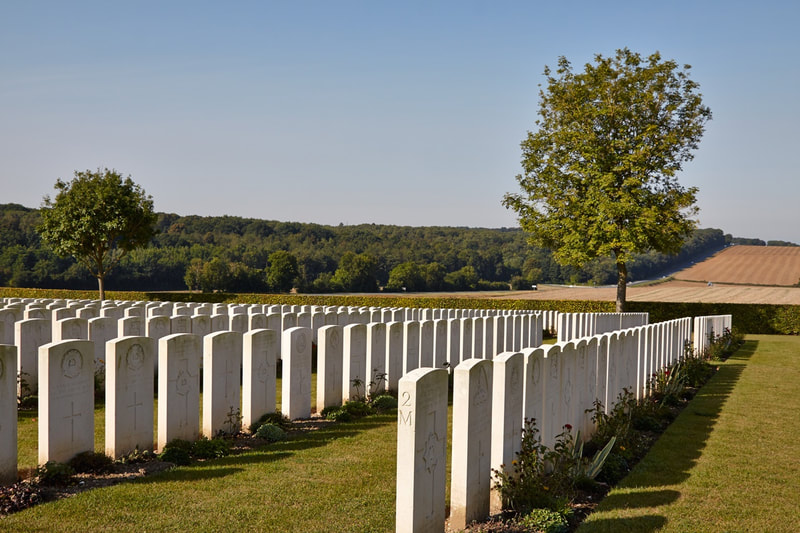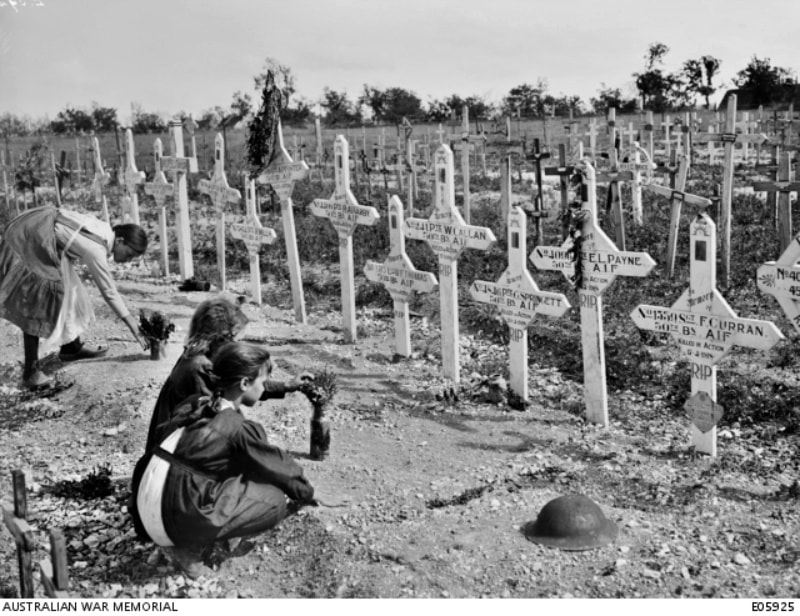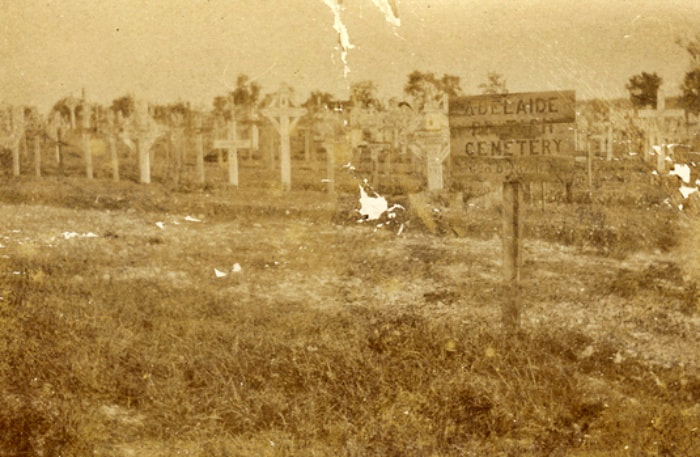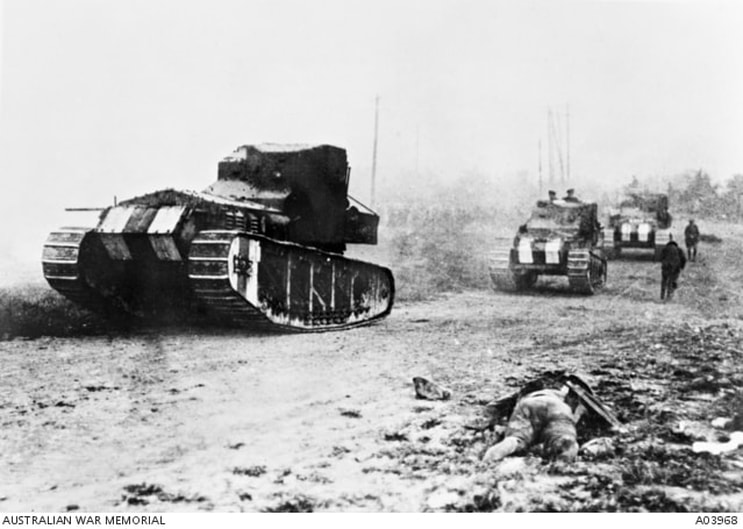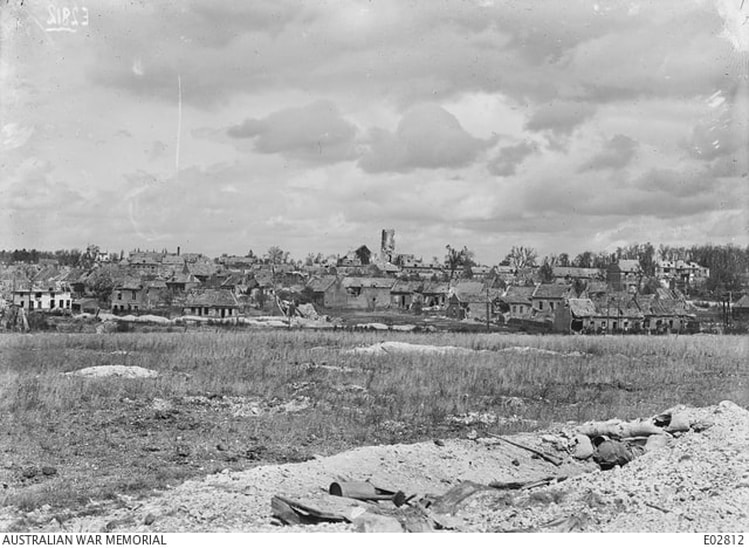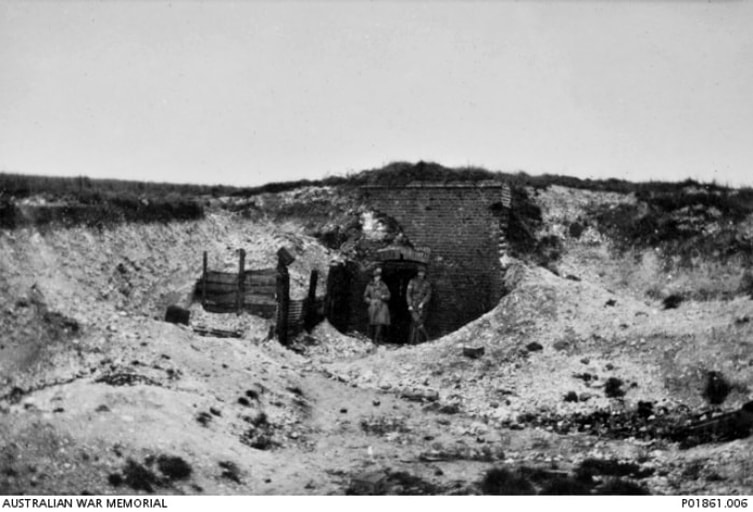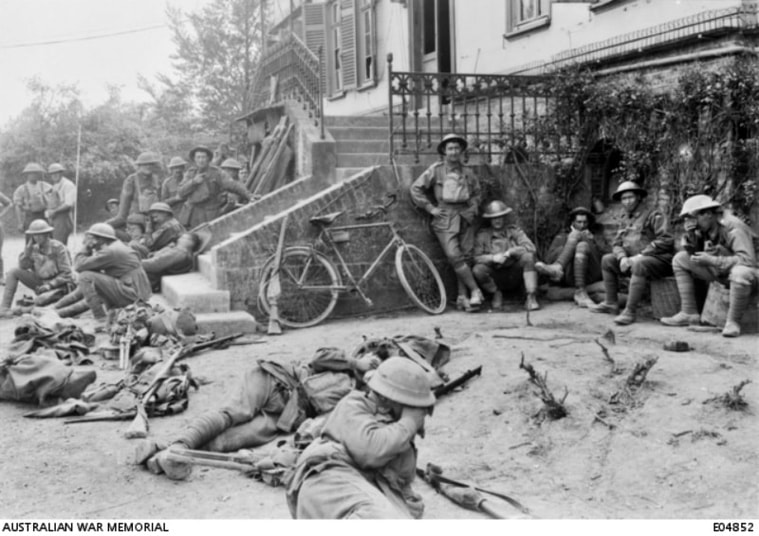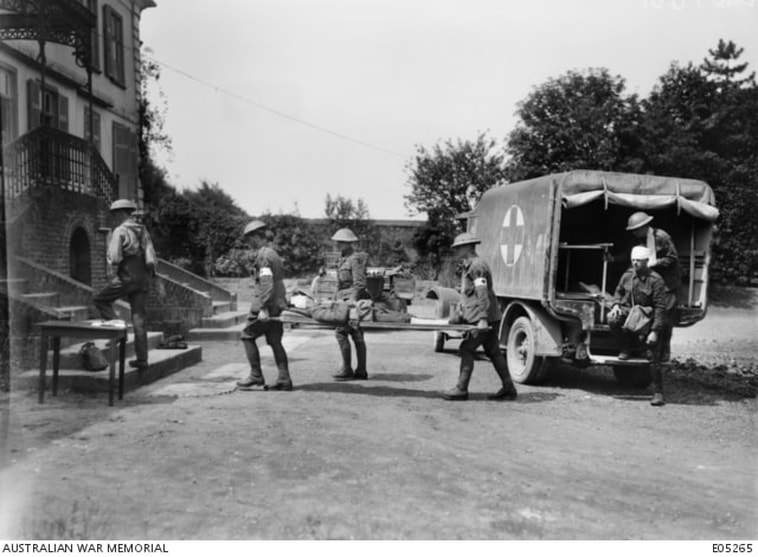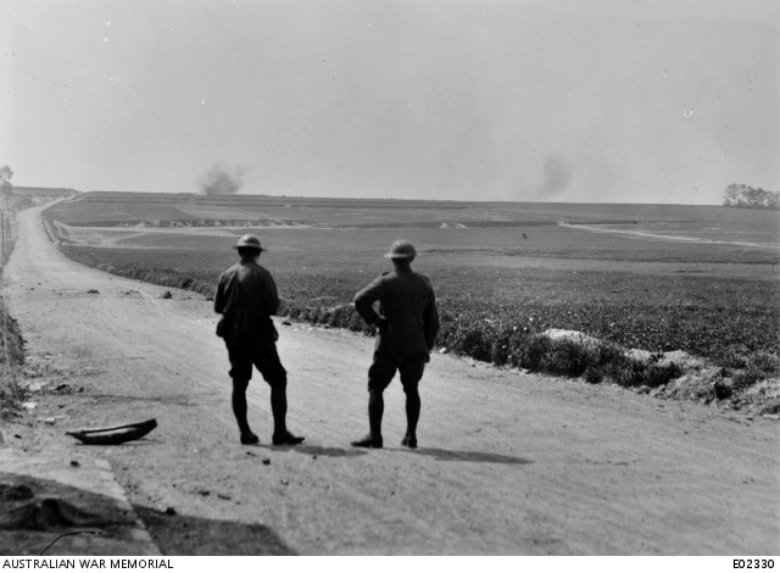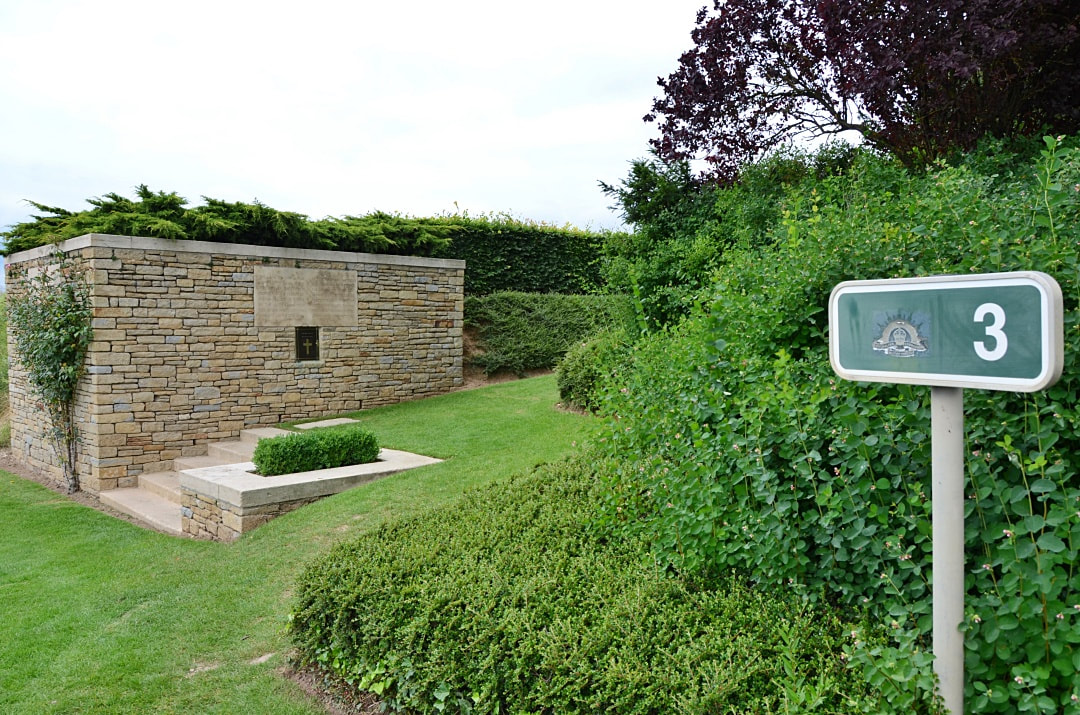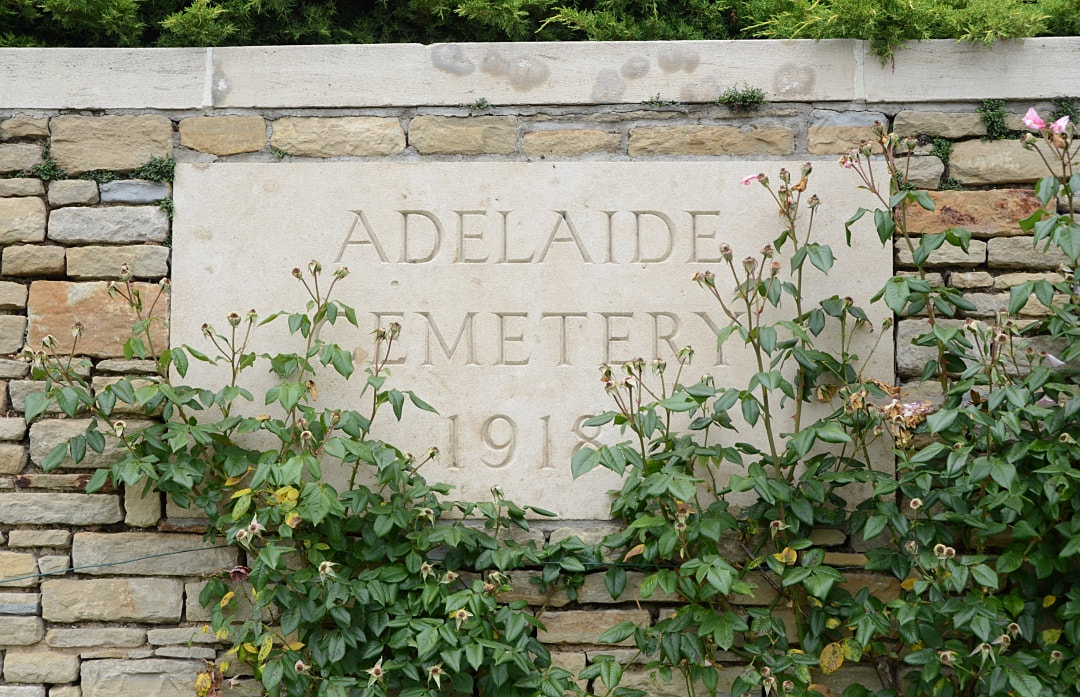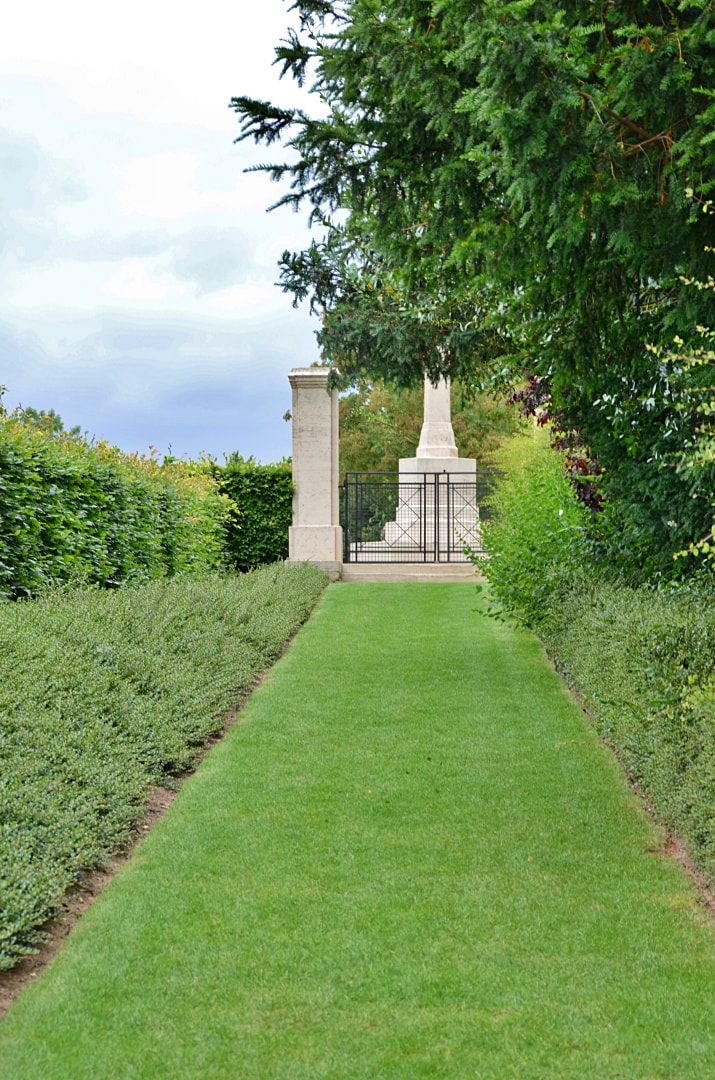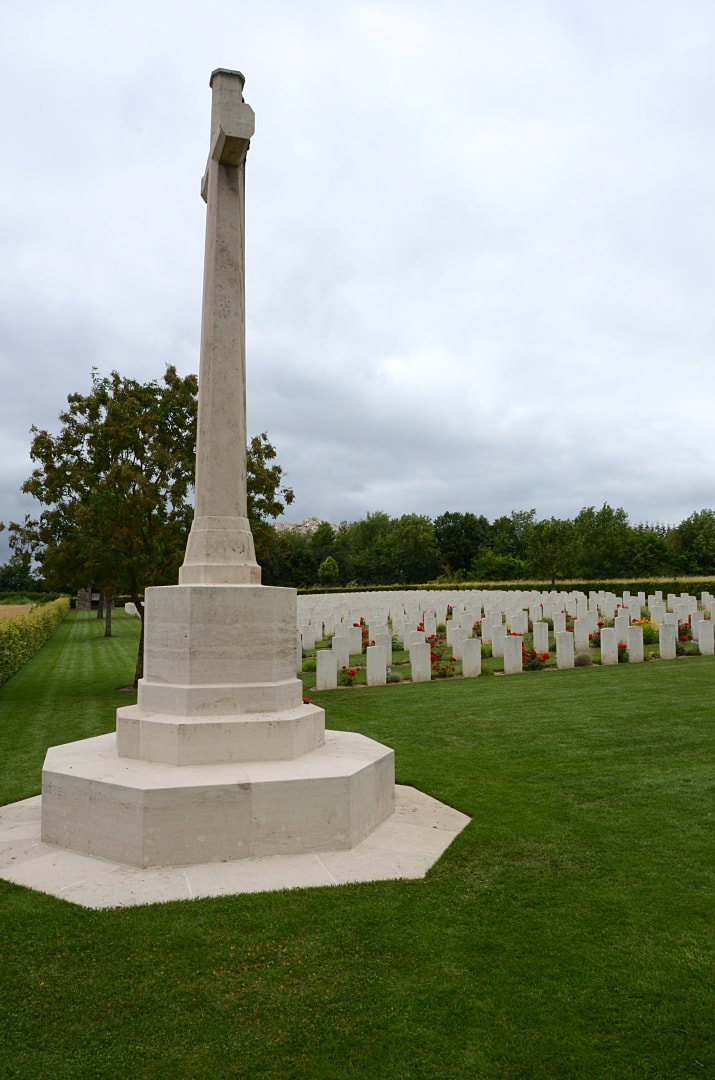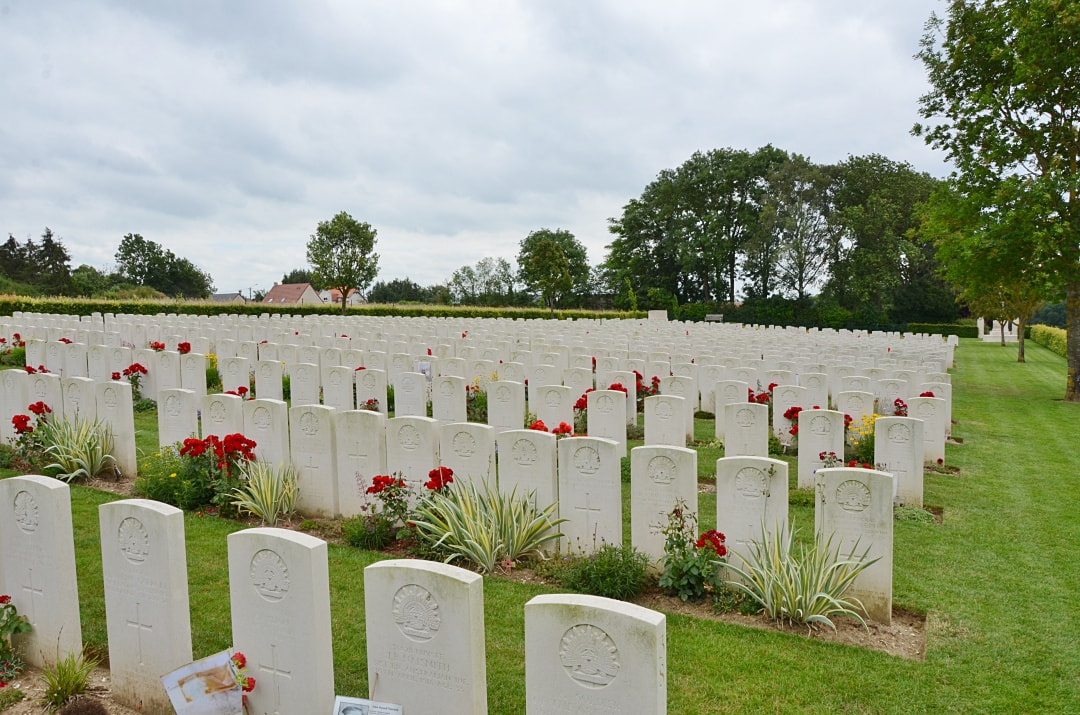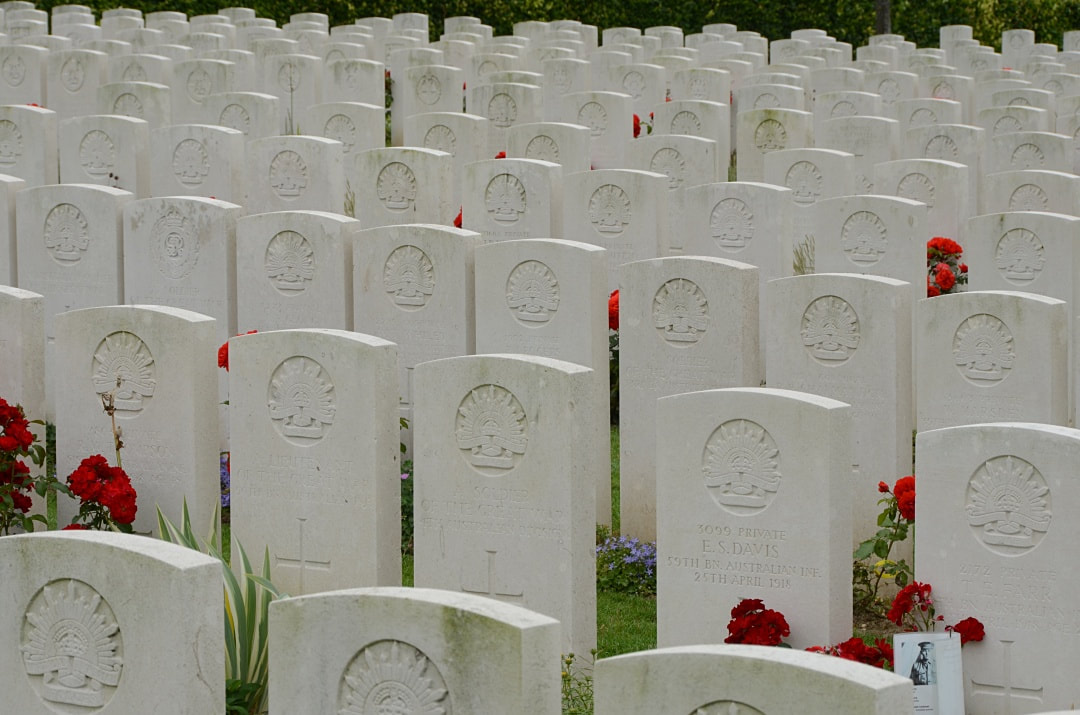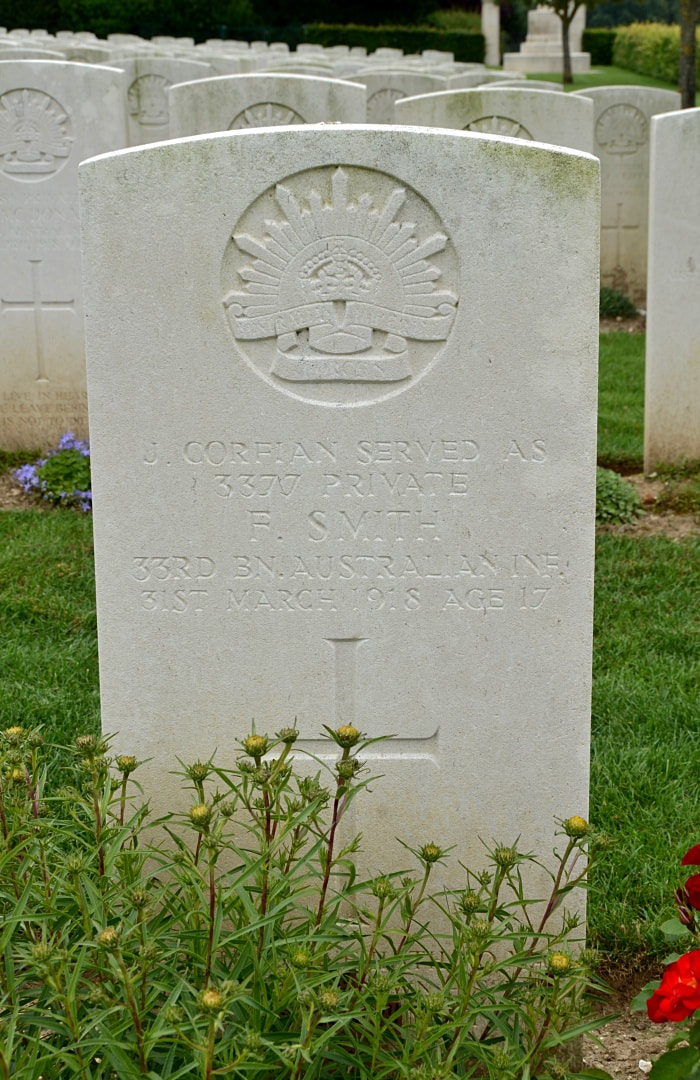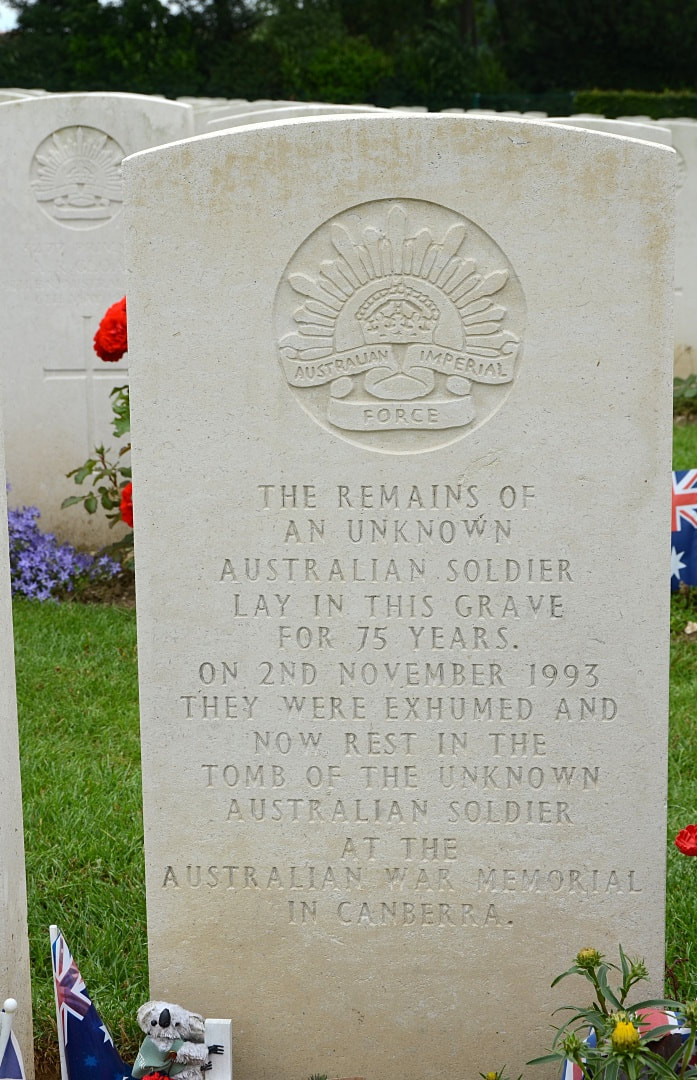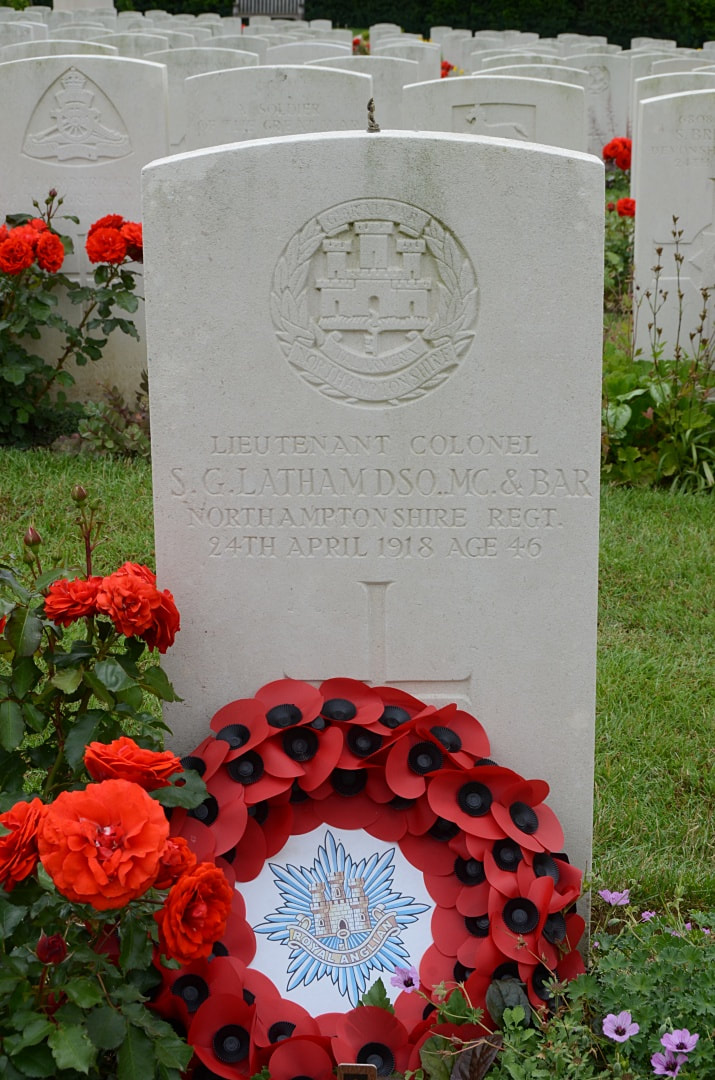ADELAIDE CEMETERY
Somme
France
GPS Coordinates - Latitude: 49.87081, Longitude: 2.49798
Location Information
Villers-Bretonneux is a town 16 Kms east of Amiens and the Cemetery is situated west of the village on the north side of the main road from Amiens to St. Quentin.
Historical Information
Villers-Bretonneux became famous in 1918, when the German advance on Amiens ended in the capture of the village by their tanks and infantry on 23 April. On the following day, the 4th and 5th Australian Divisions, with units of the 8th and 18th Divisions, recaptured the whole of the village and on 8 August 1918, the 2nd and 5th Australian Divisions advanced from its eastern outskirts in the Battle of Amiens.
Adelaide Cemetery was begun early in June 1918 and used by the 2nd and 3rd Australian Divisions. It continued in use until the Allies began their advance in mid August, by which time it contained 90 graves (the greater part of the present Plot I, Rows A to E).
After the Armistice a large number of graves were brought into the cemetery from small graveyards and isolated positions on the north, west and south of Villers-Bretonneux and they were, without exception, those of men who died in the months from March to September 1918.
They included:-
CACHY BRITISH CEMETERY, on the North-Western outskirts of the village of Cachy, contained the graves of 2 British soldiers who fell in March, 1918, and 10 Canadians who fell in August.
CHALK LANE CEMETERY, VILLERS-BRETONNEUX, 100 metres from Adelaide Cemetery, used in April and May, 1918, and contained the graves of 14 soldiers from the United Kingdom and 10 from Australia.
EMBANKMENT CEMETERY, VILLERS-BRETONNEUX, which was used by the 4th Australian and 2nd Australian Divisions from the end of April to July, 1918. It contained the graves of 37 Australian soldiers and 1 British airman. It was a little West of Adelaide Cemetery, beside the railway and behind a Dressing Station.
WHITE CHATEAU CEMETERY, CACHY, between L'Abbe Wood and the railway, 500 metres West of Adelaide Cemetery. It was used from April to August, 1918, and it contained the graves of 23 soldiers from Australia, 9 from the United Kingdom and 2 from Canada.
Plot I was filled, Plot II was made almost entirely with graves from United Kingdom units, and Plot III almost entirely with Australian.
There are now 960 Commonwealth servicemen of the First World War buried or commemorated in this cemetery. 263 of the burials are unidentified but there are special memorials to four casualties known, or believed to be buried among them.
Total Burials: 960.
Identified Commonwealth Casualties: Australia 409, United Kingdom 268, Canada 19. Total 696.
Unidentified Commonwealth Casualties: Australia 117, United Kingdom 95, Canada 3, Unknown 48. Total 263.
The cemetery was designed by Sir Edwin Lutyens and George Hartley Goldsmith
On 2 November 1993, following a request by the government of Australia, an unknown Australian soldier killed in the First World War was exhumed from Plot III, Row M, Grave 13, and is now buried in the Australian War Memorial in Canberra.
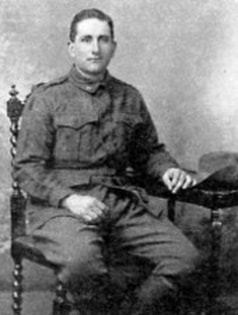
3526 Private
Sydney Kingston Bignell
31st Bn. Australian Infantry, A. I. F.
10th April 1918, aged 25.
Plot III. S. 17.
Son of Samuel and Mary Ann Bignell. Born Queensland.
Picture courtesy of Jim Donald, Deception Bay, Queensland
Sydney Kingston Bignell
31st Bn. Australian Infantry, A. I. F.
10th April 1918, aged 25.
Plot III. S. 17.
Son of Samuel and Mary Ann Bignell. Born Queensland.
Picture courtesy of Jim Donald, Deception Bay, Queensland
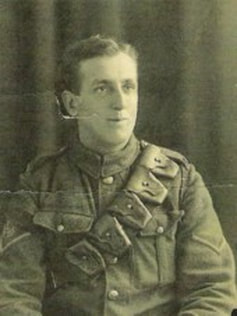
294212 Lance Bombardier
John Alfred Elliott
144th Heavy Battery, Royal Garrison Artillery.
1st April 1918.
Plot II. C. 3.
Picture courtesy of Patricia McCrory, Great Niece of this soldier
John Alfred Elliott
144th Heavy Battery, Royal Garrison Artillery.
1st April 1918.
Plot II. C. 3.
Picture courtesy of Patricia McCrory, Great Niece of this soldier
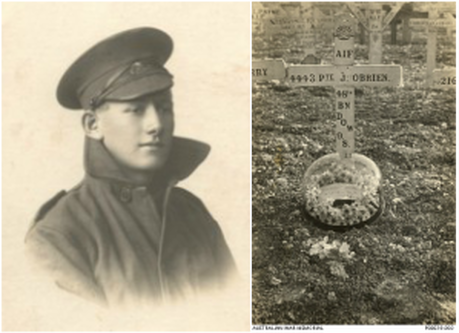
4443A Private
Jack O'Brien
48th Bn. Australian Infantry, A. I. F.
9th August 1918, aged 18.
Plot III. I. 15
Son of Mr. and Mrs. W. O'Brien, of 23, Henderson St., Fremantle, Western Australia.
Picture courtesy of nephew John O'Brien, East Fremantle, Western Australia
Larger image of Jack's original grave marker can be found below
Jack O'Brien
48th Bn. Australian Infantry, A. I. F.
9th August 1918, aged 18.
Plot III. I. 15
Son of Mr. and Mrs. W. O'Brien, of 23, Henderson St., Fremantle, Western Australia.
Picture courtesy of nephew John O'Brien, East Fremantle, Western Australia
Larger image of Jack's original grave marker can be found below
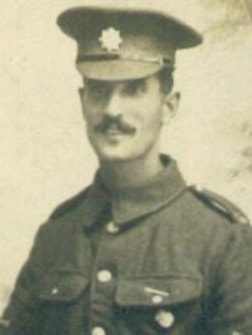
26061 Sergeant
Joseph Spiller Seldon M. M.
2nd Bn. Devonshire Regiment
24th April 1918.
Plot II. L. 22
Beloved husband of Ellen Rose Seldon & father of William Henry Seldon (born 1912) and Joseph Harry Seldon (born 1914) of South London, formerly of Broadclyst, Devon.
Picture courtesy of his grandsons, Graham and Doug
Joseph Spiller Seldon M. M.
2nd Bn. Devonshire Regiment
24th April 1918.
Plot II. L. 22
Beloved husband of Ellen Rose Seldon & father of William Henry Seldon (born 1912) and Joseph Harry Seldon (born 1914) of South London, formerly of Broadclyst, Devon.
Picture courtesy of his grandsons, Graham and Doug
The images below show some of the original grave markers at Adelaide Cemetery
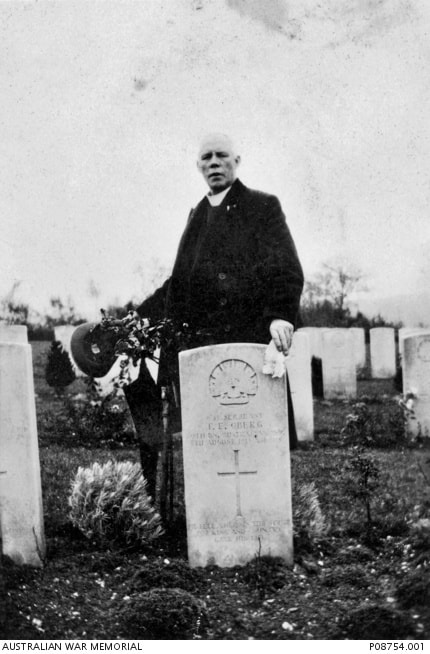
Reverend Dixon Hudson in the Adelaide Cemetery behind the headstone of Corporal Frank Eric Oberg, B Company, 20th Battalion. of Carlton, NSW, A tailor prior to enlistment, he embarked from Sydney on board HMAT Berrima (A35) on June 1915. Oberg was promoted to the rank of Sergeant (Sgt) on 14 July 1918. Sgt Oberg was killed in action near Villers Bretonneux, France on the 8 August 1918; he was 23 years of age. Reverend Hudson had attened Sgt Oberg's funeral in 1918 and sent this photograph to Sgt Oberg's sister.
Cemetery images in this gallery © Geerhard Joos
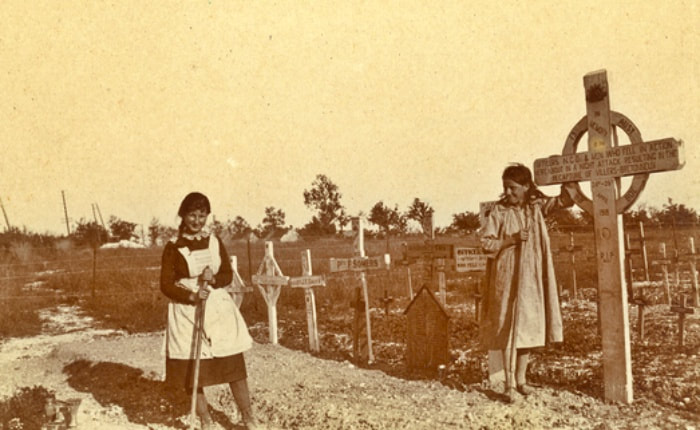
Two young French women tend to graves in the Adelaide Cemetery. The small cross in the middle of the row is for 1953 Francis Patrick Somers. The large cross on the right honours the men of the 13th Infantry Brigade who died between 24 and 25 April 1918 and is inscribed "In memory of the officers, NCOs and men who fell in action hereabout in a night attack resulting in the recapture of Villers Bretonneux".
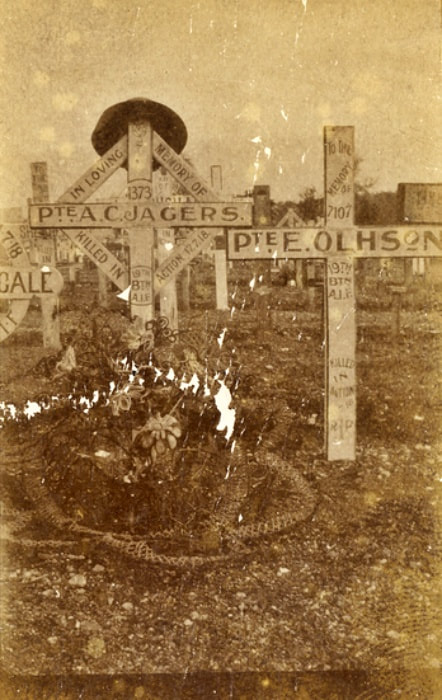
Graves and original grave markers of two 19th Battalion soldiers. On the left is that of 1373 Private Ambrose Campbell Jaggers [mispelt as Jagers] of Bega, NSW, and on the right that of 7107 Private Ernest Ohlson, of Sydney, NSW (originally of Hernosand, Sweden). Image from a collection related to 902 Sergeant Alfred John Roberts, 27th Battalion.
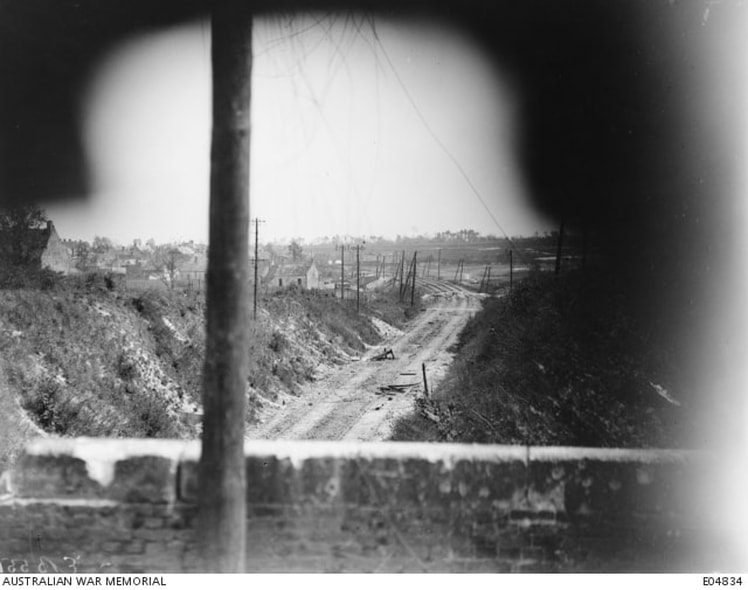
21st May 1918; Villers-Bretonneux, France. 21 May 1918. Looking towards Monument Wood, on the right skyline, from Villers-Bretonneux. The view was photographed through the observation hole in a house by the Railway Bridge when the enemy held the country beyond the white line above the telegraph posts.
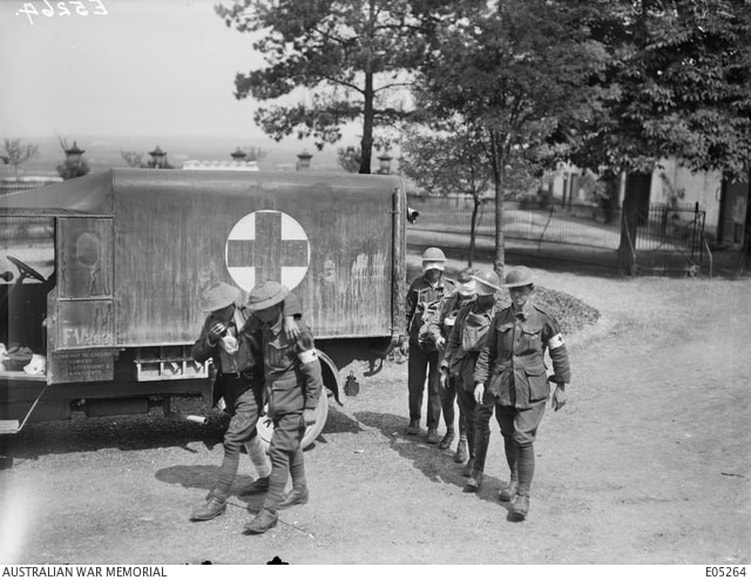
Soldiers, gassed during fighting in the August offensive, being assisted by two members of 2nd Division Army Medical Corps details at the White Chateau. The injured men have bandages wrapped around their eyes. Note the sign on the motor ambulance (left) reads 'Load not to exceed 1 driver, 1 attendant & 8 patients'.
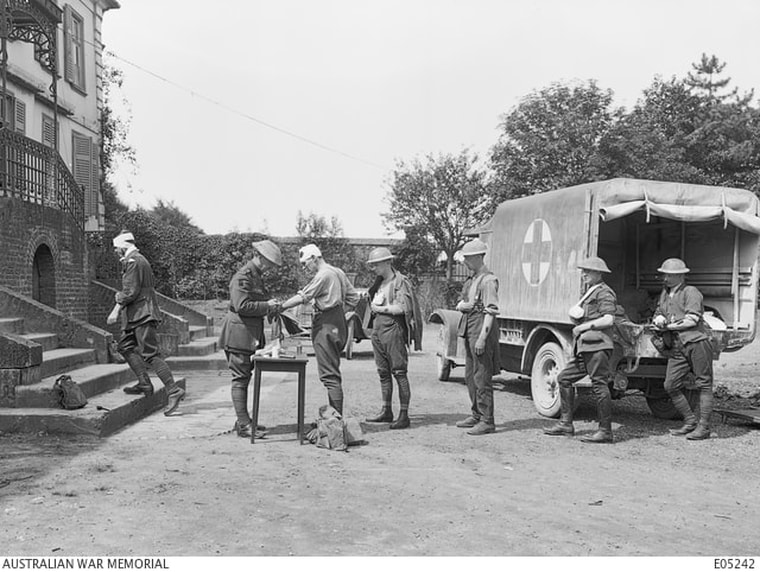
Injured Australian soldiers being injected by a member of the 5th Division Medical Corps with anti-tetanus serum outside the Medical Dressing Station established at the White Chateau. All the men are unidentified. One of the soldiers leaning on the motor ambulance (the soldier on the left) is a member of the Mechanical Transport Corps. Note the antiseptic mark on the left arm of the injured men, each of who is bandaged on the head or right arm.

